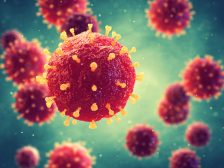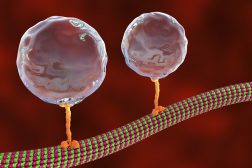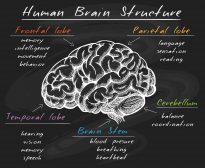Biosecurity and Biocontrol

Kiwifruit horticulture, New Zealand
Table of Contents
In the previous lesson, we learned about the importance of modern science collaborating with mātauranga Māori. Now, let’s explore the various threats to biosecurity and their impact on New Zealand ecosystems.
Biosecurity Defined
When one is secured, it means it is protected against threats. Biosecurity, thus, refers to the various measures aimed at securing the life of an organism or of an entire population of a species. In ecology, biosecurity entails the various processes that will detect, control, or minimize the capacity of unwanted organisms in disrupting ecological balance.
New Zealand and Biosecurity
In New Zealand, biosecurity refers to the preventive measures against the threats of microbial diseases, pests, and weeds to the security of agriculture and environmental communities. (Ref.1)
New Zealand has a rich biodiversity. It is home to various endemic plant and animal species, such as those described in these previous lessons: New Zealand’s endemic fauna and flora. However, its ecosystems are fragile. Some species have already vanished and others are facing the risk of extinction due to the destructive biological threats.
Below are some examples of the strategies employed in New Zealand to secure susceptible species from the impact of biological threats.
Bacterium PSA Control and Management
Kiwifruit, a vine plant originally from China, was first commercially planted in New Zealand. (Ref. 2) It is one of the most valuable products in the country. In 2010, it accounted for 2.5% of the country’s export. And so when the kiwifruit vines became infected with Psa, this caused massive concern to the kiwifruit industry. (Ref. 3)
Psa (Pseudomonas syringae pv. Actinidiae) is a bacterium causing Psa-V disease in kiwifruit. The fruit itself is not affected. However, Psa causes leaf spotting and cane collapse, and ultimately the death of the plant. (Ref. 4) The bacterial spores are airborne, which made them difficult to control. (Ref. 4)
Psa first appeared on green kiwifruit in Japan in 1984. In New Zealand, Psa was first detected in November 2010 on a Te Puke orchard. The worst-affected orchards were sprayed with antibacterial agents. Vines were removed and the others were contained. They also screened kiwifruit cultivars to search those that are Psa-V resistant and with desirable traits, like flavor, crop yield, storage, and color. (Ref.3)
Myrtle Rust Control and Management
Myrtle rust is a disease caused by Austropuccinia psidii (fungus). The fungus is native to Brazil. It infects plants in the family Myrtaceae (myrtle family). It affects various parts of the plant host, especially those parts that are newly growing. When the infection is severe, the leaves become twisted and the plant dies. (Ref.5)
In New Zealand, myrtle rust was first detected in April 2017. It was found on Kermadec pōhutukawa trees on Raoul Island. The following month, it was detected on the mainland for the first time. It infected five pōhutukawa seedlings at a Kerikeri nursery. (Ref. 6)
Because New Zealand has many native plants in the myrtle family, myrtle rust also caused huge concern. Some of the control and management strategies implemented were boosting plant resistance, finding cures to myrtle rust disease, speeding up the detection of fungal infection, and improving collection for seed banking. The movement of potential vectors (such as bees) had also been restricted (Ref. 6)
Biological Control
Biological control, or biocontrol, refers to the use of an organism to control the population of another organism. Below are some of the examples of biological control: (Ref.7)
- Red spider mites were released to the wild to reduce the spread and growth of invasive weeds introduced from Scotland.
- Tiny wasps from Ireland were used as a biological control against clover root weevil. They attacked the pests that were degrading pasture.
- Microbial agents (such as bacteria and viruses) to control the population of introduced possums, one of the worst pests in the country.
Monitoring the Impact of Biocontrols
Biocontrols are useful because they are less detrimental to the environment than using pesticides and other chemicals. However, they should be closely monitored to ensure that they do not disrupt the ecological balance of an ecosystem. If you will remember in our previous lesson, stoats were used as biological controls of rabbit and hare populations. However, they also hunted takahē when their food source became scarce. (Ref. 8)
In the next lesson, let’s take a look at population attributes, regulation, and growth.
References:
1. Biosecurity. (2017). Science Learning Hub. https://www.sciencelearn.org.nz/resources/1494-biosecurity
2. Kiwifruit. (2020). Purdue.Edu. https://hort.purdue.edu/newcrop/morton/kiwifruit_ars.html
3. Kiwifruit – learning to live with Psa. (2010). Science Learning Hub. https://www.sciencelearn.org.nz/resources/2638-kiwifruit-learning-to-live-with-psa
4. Kiwifruit plagued by Psa. (2010). Science Learning Hub. https://www.sciencelearn.org.nz/resources/2143-kiwifruit-plagued-by-psa
5. Myrtle rust. (2010). Science Learning Hub. https://www.sciencelearn.org.nz/resources/2650-myrtle-rust
6. Detecting myrtle rust in New Zealand. (2018). Science Learning Hub. https://www.sciencelearn.org.nz/interactive_timeline/11-detecting-myrtle-rust-in-new-zealand
7. Biocontrol. (2019). Science Learning Hub. https://www.sciencelearn.org.nz/resources/1743-biocontrol
8. Threats to takahē. (2019). Science Learning Hub. https://www.sciencelearn.org.nz/resources/2705-threats-to-takahe
You will also like...

Pollution in Freshwater Ecosystems
There are many environmental factors that arise due to the usage of water in one way or another and for every action tha..

The Evolution of Cell Organelles
The nucleus containing the genetic material, DNA, and the mitochondria, well-identified as the "powerhouse of the cell",..

Biological Viruses
Viruses possess both living and non-living characteristics. This unique feature distinguishes them from other organisms...

Movement of Molecules Across Cell Membranes
Molecules move within the cell or from one cell to another through different strategies. Transport may be in the form of..

The Conscious & Unconscious Nervous System
This tutorial elaborates on how the nervous system works, particularly at the tissue level of the brain. There are three..

Amphibians & Early Reptiles
Obtaining air outside an aquatic environment required species to acquire suitable adaptations, and this was the case of ..
